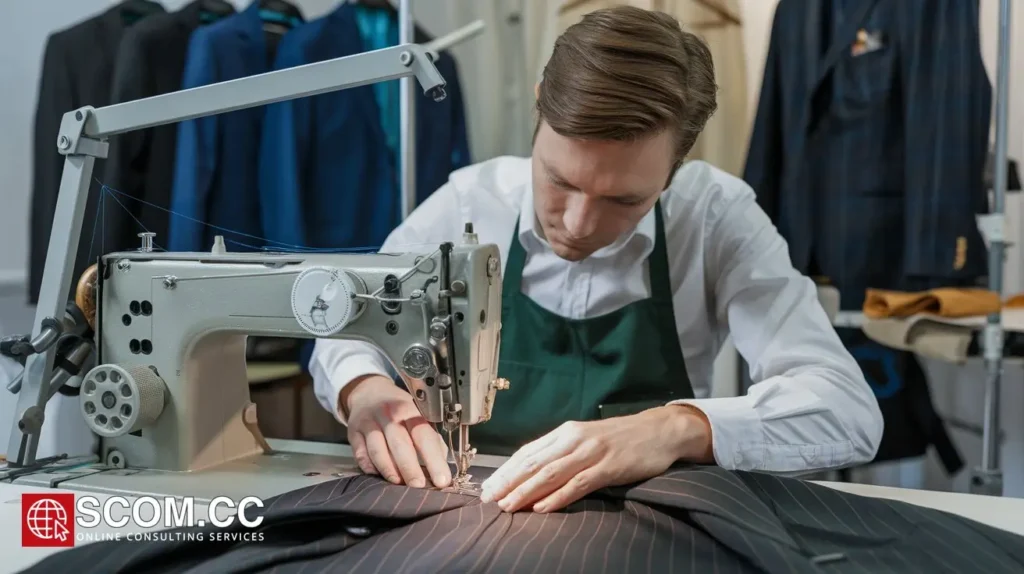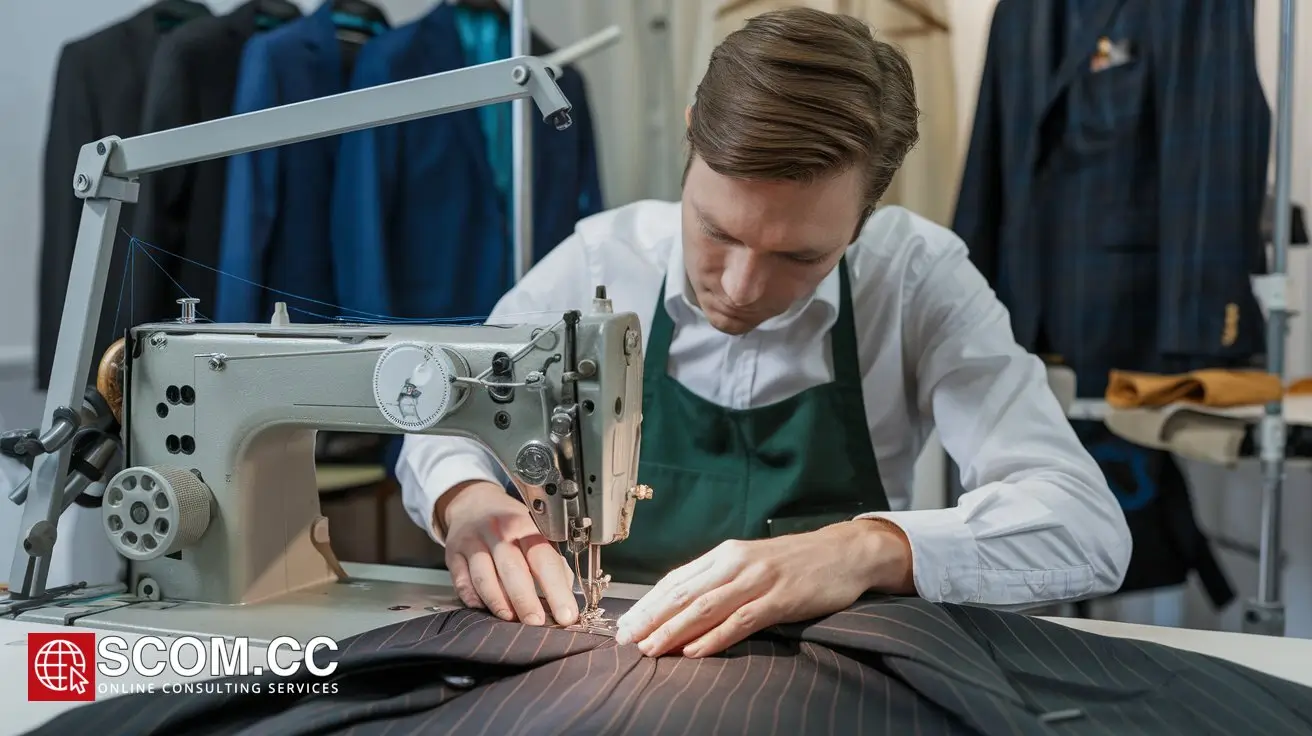How Can Tailors Use Upcycled Materials to Create Stunning New Designs?

- How Can Tailors Use Upcycled Materials to Create Stunning New Designs?
- 1. Understanding the Concept of Upcycling in Fashion
- 2. Sourcing Upcycled Materials
- 3. Innovative Techniques for Upcycling
- 4. Designing with Upcycled Materials
- 5. Collaborating with Clients for Custom Upcycled Pieces
- 6. Marketing Upcycled Designs
- Conclusion
- Summary Table
-
FAQ
- 1. What is the difference between upcycling and recycling?
- 2. Where can tailors find upcycled materials?
- 3. How can I make upcycled garments look modern and stylish?
- 4. Can upcycling be used for high-end fashion?
- 5. How do I market upcycled designs?
- 6. Is upcycling cost-effective?
- 7. Can I upcycle a sentimental garment?
How Can Tailors Use Upcycled Materials to Create Stunning New Designs?
In a world increasingly focused on sustainability, upcycling has emerged as a powerful trend in the fashion industry. For tailors, upcycling offers a unique opportunity to transform discarded or unused materials into stunning new designs. Not only does this practice contribute to reducing waste, but it also allows for the creation of one-of-a-kind garments that stand out in a sea of mass-produced clothing. This article will explore how tailors can use upcycled materials to craft innovative and eye-catching designs while embracing sustainability.
1. Understanding the Concept of Upcycling in Fashion
What is Upcycling?
Upcycling involves taking old or discarded materials and repurposing them into new, often higher-quality items. Unlike recycling, which breaks down materials to create something new, upcycling retains the original material's form, adding value through creativity and craftsmanship. In the context of tailoring, this means using fabrics, garments, and other materials that might otherwise go to waste to create new and unique pieces.
Why Upcycling Matters
- Environmental Impact: Upcycling reduces the demand for new raw materials, thereby conserving resources and minimizing waste.
- Economic Benefits: It can be cost-effective, allowing tailors to source materials at a lower cost or even for free.
- Creative Freedom: Upcycling encourages creativity, as tailors can experiment with unconventional materials and designs.
Project Example: Denim Jacket Transformation
A tailor takes old denim jeans and repurposes them into a trendy patchwork denim jacket, combining different shades and textures of denim for a unique look.
2. Sourcing Upcycled Materials
Where to Find Upcycled Materials
Finding the right materials is a crucial step in the upcycling process. Tailors can source upcycled materials from various places:
- Thrift Stores: Thrift shops are treasure troves of discarded clothing that can be repurposed into new designs.
- Fabric Scraps: Tailors often have leftover fabric scraps from previous projects. These scraps can be creatively combined to form new garments.
- Old Garments: Clients may have old clothes they no longer wear. Tailors can offer to upcycle these items into something new.
- Home Textiles: Items like curtains, tablecloths, and bed linens can be transformed into clothing or accessories.
- Donations: Partner with local communities or organizations to collect old garments that can be upcycled.
Project Example: Vintage Silk Scarves into a Blouse
A collection of vintage silk scarves is transformed into a luxurious blouse, with each scarf contributing a unique color and pattern to the final piece.
3. Innovative Techniques for Upcycling
Patchwork and Quilting
Patchwork involves sewing together pieces of fabric, often in different colors and patterns, to create a larger design. This technique is particularly well-suited for upcycling, as it allows tailors to make use of smaller fabric scraps that might otherwise be discarded.
- Quilted Jackets: Combine fabric scraps to create a quilted jacket with a unique pattern and texture.
- Patchwork Skirts: Use a mix of materials to craft a patchwork skirt that’s vibrant and full of character.
Deconstruction and Reconstruction
Deconstruction involves taking apart an existing garment and using the pieces to create something entirely new. This method allows tailors to reimagine the original garment and create innovative designs.
- Deconstructed Shirts: Transform a traditional button-up shirt by deconstructing it and reassembling it with added panels or asymmetrical elements.
- Reconstructed Blazers: Repurpose old blazers by adding new sleeves, collars, or pockets from other garments.
Dyeing and Painting
Upcycled materials can be given a fresh look through dyeing or painting. This is particularly useful for materials that may have faded or stained over time.
- Tie-Dye Techniques: Revitalize old fabrics with tie-dye techniques, adding bold colors and patterns to otherwise plain materials.
- Hand-Painted Fabrics: Customize garments with hand-painted designs, turning them into wearable art.
Project Example: Patchwork Dress from Fabric Scraps
A tailor collects fabric scraps from various projects and combines them into a patchwork dress. The result is a colorful, eclectic piece that tells a story through its fabric origins.
4. Designing with Upcycled Materials
Incorporating Unique Textures and Patterns
One of the benefits of upcycling is the opportunity to work with a wide range of textures and patterns that may not be available in conventional fabrics. Tailors can mix and match these elements to create visually stunning designs.
- Mixing Textures: Combine materials like leather, denim, silk, and wool in a single garment to create a dynamic, multi-textured piece.
- Layering Patterns: Play with patterns by layering different prints, such as florals, stripes, and plaids, for a bold and modern look.
Balancing Aesthetics and Functionality
When working with upcycled materials, it’s essential to balance aesthetics with functionality. Tailors should consider the durability and wearability of the materials to ensure that the final product is not only visually appealing but also practical.
- Reinforcing Fabrics: Strengthen delicate fabrics by layering them with more durable materials or adding linings.
- Strategic Placement: Place stronger materials in high-wear areas, such as elbows, knees, or pockets, to enhance the garment's longevity.
Project Example: Upcycled Wool Coat with Leather Accents
An old wool coat is given a new life with the addition of upcycled leather accents on the collar and cuffs. The combination of textures creates a sophisticated, high-end look.
5. Collaborating with Clients for Custom Upcycled Pieces
Offering Upcycling as a Tailoring Service
Tailors can offer upcycling as a specialized service to clients who want to breathe new life into their old garments. This service can be particularly appealing to environmentally conscious customers or those with sentimental attachments to certain clothing items.
- Consultation Process: Work with clients to identify garments they wish to upcycle and discuss potential design ideas.
- Incorporating Client’s Vision: Tailors can incorporate the client’s vision while offering expert advice on how to best utilize the upcycled materials.
Project Example: Wedding Dress Upcycled into an Evening Gown
A client’s wedding dress is transformed into a stunning evening gown. The tailor repurposes the lace and silk from the original dress, creating a new design that retains sentimental value while being practical for future use.
6. Marketing Upcycled Designs
Emphasizing Sustainability
When marketing upcycled designs, tailors should emphasize the sustainability aspect of their work. Highlighting the eco-friendly benefits of upcycling can attract customers who are passionate about reducing their environmental impact.
- Storytelling: Share the story behind each upcycled garment, including where the materials came from and how they were transformed.
- Eco-Friendly Branding: Use eco-friendly packaging and promote your commitment to sustainability in all marketing materials.
Creating a Niche Market
Upcycled designs are often unique and can appeal to a niche market of customers looking for one-of-a-kind pieces. Tailors can build a loyal customer base by offering exclusive, limited-edition designs made from upcycled materials.
- Limited Edition Collections: Create small collections of upcycled garments, each with a limited number of pieces, to enhance their exclusivity.
- Custom Orders: Offer custom upcycled designs tailored to the individual preferences of your clients.
Project Example: Eco-Friendly Fashion Line
A tailor launches a fashion line focused entirely on upcycled materials. Each piece is accompanied by a tag detailing the materials used and the story behind its creation, appealing to environmentally conscious consumers.
Conclusion
Upcycling provides tailors with an incredible opportunity to showcase their creativity and craftsmanship while contributing to a more sustainable fashion industry. By
utilizing discarded materials and transforming them into stunning new designs, tailors can create unique garments that stand out from the crowd. Whether through patchwork, deconstruction, or innovative dyeing techniques, the possibilities for upcycled fashion are endless. As more consumers seek sustainable alternatives, upcycled designs not only reduce waste but also offer a refreshing break from fast fashion's uniformity. By embracing upcycling, tailors can craft garments that tell a story, carry meaning, and, most importantly, make a positive impact on the planet.
Summary Table
| Upcycling Technique | Details |
|---|---|
| Patchwork and Quilting | Combine fabric scraps to create new garments with unique patterns and textures. |
| Deconstruction and Reconstruction | Take apart old garments and use the pieces to create innovative designs. |
| Dyeing and Painting | Revitalize materials through dyeing or hand-painting to add new colors and designs. |
| Sourcing Materials | Obtain materials from thrift stores, fabric scraps, or old garments. |
| Mixing Textures and Patterns | Combine various textures and patterns for dynamic, eye-catching designs. |
| Custom Client Collaboration | Work with clients to upcycle their sentimental or unused garments. |
| Sustainability Marketing | Emphasize the eco-friendly benefits of upcycled designs to attract conscious consumers. |
FAQ
1. What is the difference between upcycling and recycling?
Upcycling retains the original material's form and adds value through creativity, while recycling breaks down materials to create new products.
2. Where can tailors find upcycled materials?
Materials can be sourced from thrift stores, fabric scraps, old garments, home textiles, and donations.
3. How can I make upcycled garments look modern and stylish?
Use techniques like patchwork, deconstruction, and dyeing to create modern and unique designs.
4. Can upcycling be used for high-end fashion?
Absolutely. Upcycling can result in luxurious and unique garments, especially when combining high-quality discarded materials with expert tailoring.
5. How do I market upcycled designs?
Focus on the sustainability aspect, tell the story behind each piece, and create exclusive, limited-edition collections.
6. Is upcycling cost-effective?
Yes, upcycling can reduce material costs, as many upcycled materials can be sourced inexpensively or even for free.
7. Can I upcycle a sentimental garment?
Yes, upcycling sentimental garments into new designs is a great way to preserve memories while creating something functional and stylish.

To explore more about tailoring, visit our Blog of Tailoring. If you have any questions or need assistance, go to our contact page. Additionally, you can find more information about tailoring and consulting at this tailoring and consulting portal.

Leave a Reply